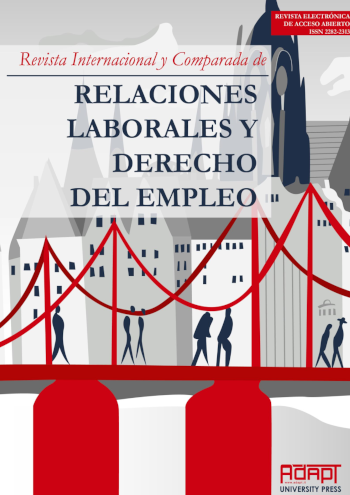Abstract
Desde sus inicios, y a lo largo de los 100 años de su existencia, la Organización Internacional del Trabajo (OIT) ha considerado central la protección de las situaciones relacionadas con la maternidad, llevando a cabo una acción normativa, también política, que ha cristalizado en la adopción de los Convenios núm. 3 (1919); 103 (1952) y 183 (2000), a los que acompañan las Recomendaciones núm. 95 (1952) y 191 (2000). En estos instrumentos normativos, a cuyo comentario se dedican las siguientes páginas, se refleja la evolución experimentada en la protección de la maternidad, desde unos planteamientos exclusivamente protectores hasta su consideración como condición para la no discriminación en el empleo, siendo el reto de futuro conseguir el doble objetivo de proteger la salud y garantizar los derechos que se derivan del empleo, para permitir que hombres y mujeres trabajen conjuntamente en pie de igualdad.
Since its inception, and throughout the 100 years of its existence, the International Labor Organization (ILO) has considered the protection of maternity-related situations central, carrying out a normative, also political, action that has crystallized in the adoption of ILO Conventions No. 3 (1919); 103 (1952) and 183 (2000), which are accompanied by Recommendations No. 95 (1952) and 191 (2000). These normative instruments, to which the following pages are dedicated, reflect the evolution experienced in maternity protection, from exclusively protective approaches to their consideration as a condition for non-discrimination in employment, being the challenge of the future to achieve the double objective of protecting health and guaranteeing the rights derived from employment, to allow men and women to work together on an equal footing.

